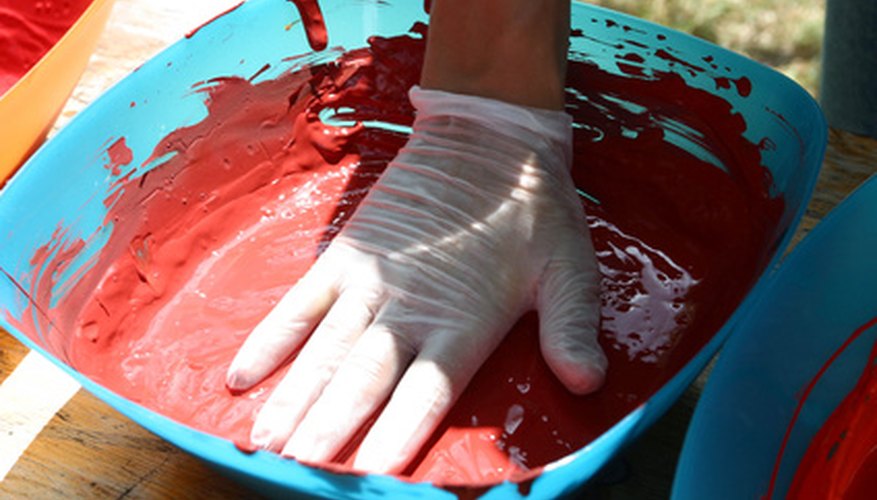Liquid latex is a rubber product that is used for many arts and crafts projects. It is a liquid compound of latex, ammonia and water that is built up in layers. Liquid latex naturally dries through contact with air, making it a very easy material to work with. There are a few tricks that experienced artists use to help ensure that liquid latex dries properly. Doing some of these tricks yourself will help to make sure your latex project is successful.
- Liquid latex is a rubber product that is used for many arts and crafts projects.
- There are a few tricks that experienced artists use to help ensure that liquid latex dries properly.
Apply the first few layers of latex as thinly as possible. If the latex is too thick, it will form a dry skin and trap liquid material inside. The ammonia will have nowhere to evaporate to, so that trapped latex will not dry. Subsequent layers can be thicker as the first few layers will absorb the ammonia. Note that if the latex is applied to a porous material such as plaster, even thick coats will dry because the ammonia can be absorbed by the material.
Use a hair dryer to force latex to dry faster. Since the latex air-dries, blowing air on it will speed the process. It is not necessary to use hot air as thin layers dry with air. If your hair dryer has a cool air setting, there is less chance of burning yourself or the latex.
- Use a hair dryer to force latex to dry faster.
- Since the latex air-dries, blowing air on it will speed the process.
Use a heat gun to vulcanise thicker coats of latex, solidifying the material. Be careful not to cause the latex to boil or burn, both of which can ruin your project. Drying latex in this manner intensifies its natural tendency to shrink as it dries and should only be done as a last resort.
WARNING
Heat guns reach temperatures in excess of 537 degrees C and should be used carefully.
